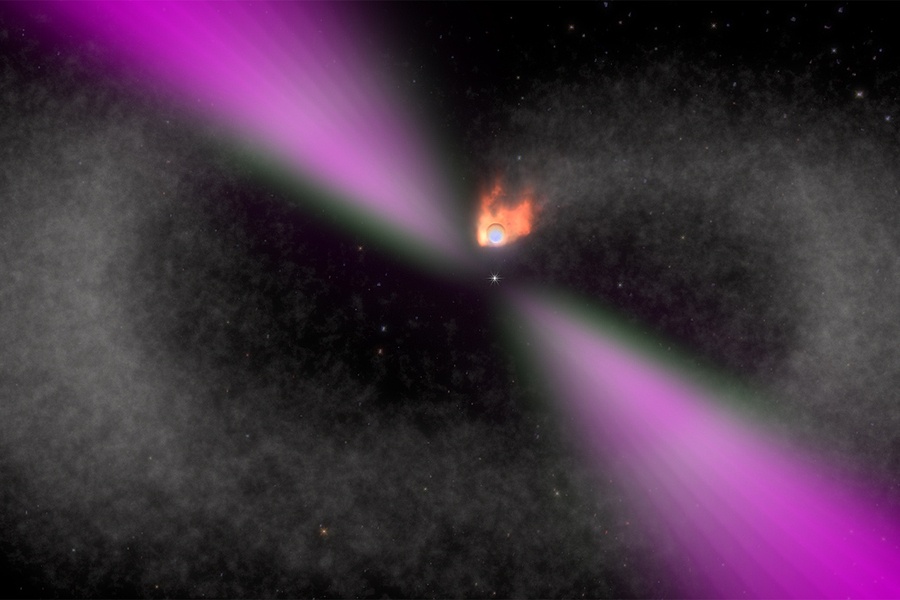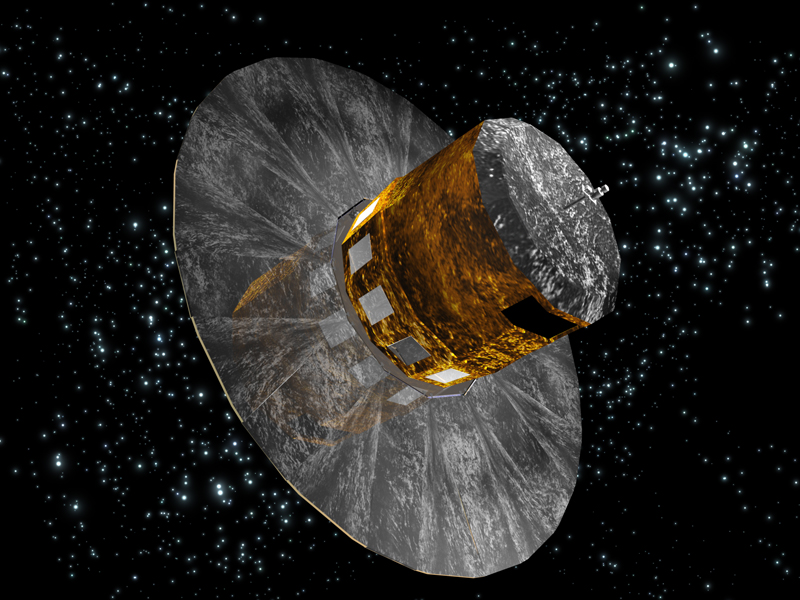
The Milky Way Galaxy has its share of oddities, from black holes and magnetars to luminous blue variable stars and strange new worlds. But, have you ever heard of a “black widow binary?” Not exactly an easy name to wrap your head around, especially if you’re afraid of spiders. But, these things actually exist in our galaxy and they’re fascinating.
Imagine a binary pair out in space—a regular star orbitally dancing with a pulsar (a rapidly spinning neutron star). Now, visualize the pulsar with its strong gravitational pull cannibalizing its companion star. It literally pulls clumps of gas out of the star so it can have something to eat. Since pulsars tend to slow down over time, that stellar “happy meal” gives the pulsar a new life. Sadly, the companion star gets destroyed in the process.
Why the name “black widow”? That cannibalization action is pretty similar to what a black widow spider here on Earth does to her male companion after they mate. Astronomers liked the analogy, and voila—now we have black widow binaries.
Finding an Unusual One
The latest black widow binary is even more strange than its two dozen siblings in the galaxy. Not only is it gobbling its companion down, but the hapless neighbor star suffers its fate while in a rapid 62-minute orbit with the pulsar. That’s one of the fastest orbital dances ever seen in one of these binaries.
That’s not all. As they say in late-night television ads, wait—there’s more. An additional star is part of this system. It lies pretty far from the central pair and moves in a very large orbit that takes it in the neighborhood of the pulsar and the slowly eroding companion star once every 10,000 years. The presence of the second star makes this a triple black widow system. As you can imagine, the very existence of this weirdly interacting triplet raises a lot of questions, mostly aimed at finding it in the first place, and then figuring out just how the grouping formed in the first place.
Searching Out This Rare Binary
The system has a catalog name that looks like a secret code: ZTF J1406+1222. The numbers actually tell you its coordinates in the sky. The grouping lies about 3,000 light-years from Earth—actually relatively close in galactic distance terms. Astronomers at MIT first observed it and its dying mate by tracking the gamma-rays and X-ray emissions given off by the pulsar. It turns out that every black widow binary astronomers have found so far was detected by the gamma-ray and X-ray emissions it gives off. The twist for finding this one was to look for something a little different because it’s not very bright in those regions of light.
In this case, the rapidly disappearing star was an obvious clue. Since astronomers have not directly detected gamma- and X-ray emissions from the companion pulsar, they got creative and focused on finding the close companion star. According to astronomer Kevin Burdge, a post-doctoral researcher at MIT, and the first author of a paper in Nature about this wacky system, the superheated side of the cannibalized star made it easier to find. “I thought, instead of looking directly for the pulsar, try looking for the star that it’s cooking,” he said in a recent press release.
As it turns out, the star’s “day side”—the hemisphere that constantly faces the pulsar—is clobbered with high-energy pulsar radiation. It eats away at the star. That radiation bath makes the companion star’s day side much hotter than its night side.
Using All the Data to Find the System
Burdge and his team at MIT used observations from a number of sources to locate this system. That included the Gaia space telescope database, which has steadily explored the galaxy for us, the Sloan Digital Sky Survey, and optical information from the Zwicky Transient Facility in California to look for the system and characterize its orbit. They found the dozen known black widow binaries by testing their observing methods and then spotted a star that varied in brightness by a factor of 13 every 62 minutes. It was an “aha!” moment and that’s how they found ZTF J1406+1222.

The Origin of this Triple Black Widow Binary
The evolutionary story of this unusual grouping is complex. According to Burdge and his team, to get a triple black widow like this, you need three things: a globular cluster, the Milky Way’s core, and our galaxy’s central black hole (called Sagittarius A*). “It’s a complicated birth scenario,” said Kevin Burdge. “This system has probably been floating around in the Milky Way for longer than the Sun has been around.”
The ZTF J1506+1222 triple black widow system was probably born inside a globular cluster that was one of many circling the Milky Way’s core billions of years ago. The Milky Way currently has about 150 (and possibly more) of these densely packed old star systems orbiting the bulge. That’s not unusual, since many galaxies have these clusters and they have played an important role in galactic history. Anyway, the home cluster of ZTR J1506+1222 had the unlucky experience of wandering too close to Sagittarius A* and its supermassive black hole. That tore the cluster apart, but somehow the triple black widow system survived that encounter. It’s been traveling through the galaxy ever since.
Could There Be More?
Are there other such systems out there? Burdge isn’t ruling them out. “The one thing we know for sure is that we see a star with a day side that’s much hotter than the night side, orbiting around something every 62 minutes,” he said. “Everything seems to point to it being a black widow binary. But there are a few weird things about it, so it’s possible it’s something entirely new.”
The team will keep watching this new system to see what it will do next. What they’ve learned from this discovery will help them as they search for more black widow binaries out there in the galaxy.
This work has been supported in part by the National Science Foundation.
For more information:
Astronomers Discover a rare “black widow” binary with shortest orbit yet.
A 62-minute orbital period black widow binary in a wide hierarchical triple
The post A Pulsar and Star are Orbiting Each Other Every 62 Minutes. The Fastest “Black Widow” Binary Ever Seen appeared first on Universe Today.
No comments:
Post a Comment